1. ANSOFF'S GROWTH MATRIX
1.1. Market Penetration
1.1.1. Growth through increasing market share in the current market segments.
1.1.2. 2 constraints
1.1.2.1. Retaliation from competitors
1.1.2.2. Legal constraint
1.2. Market Development
1.2.1. Targeting existing products and offerings to new market segments, either new geography or a different customer set.
1.2.2. Can take 2 forms
1.2.2.1. New users: aluminum for manufacturers vs aerospace and automobiles.
1.2.2.2. New geographies: internationalization
1.2.3. Challenges
1.2.3.1. New resources and capabilities
1.2.3.2. Project management risk
1.3. Product Development
1.3.1. Developing new products to the existing market segment. These can be additional to current range, or replacement products and services to replenish outdated offerings.
1.3.2. Can be expensive and high-risk activity
1.3.2.1. New reesources and capabilities
1.3.2.2. Project management risk
1.4. Diversification (related & unrelated)
1.4.1. Growth through developing new businesses for new markets. A classic corporate strategy framework for generating 4 basic directions for organizational growth
1.5. A classic corporate strategy framework for generating 4 basic directions for organizational growth.
2. RELATED AND UNRELATED DIVERSIFICATION
2.1. Related Diversification
2.1.1. Involve sharing or transferring specialized resources and capabilities.
2.1.2. Specialized R&C
2.1.2.1. Have very specific applications
2.1.2.2. Application to a restricted range of industry and business types
2.1.3. General R&C
2.1.3.1. General management capabilities, HR, Accounting
2.1.3.2. Application across a wide range of industry and business types
2.1.4. Value Chain Activities
2.1.5. Conceptualization
2.1.5.1. Diversify into an industry because of strategic reasons
2.1.5.2. Involves diversifying into business with
2.1.5.2.1. Strategic fit
2.1.5.2.2. Meaningful value chain relationships
2.1.5.2.3. Unifying strategic theme
2.1.5.3. Potential to leverage economies of scope
2.2. Unrelated Diversification
2.2.1. Conglomerate diversification
2.2.2. Enter new businesses by acquiring an established organization rather than forming a start-up subsidiary within their own corporate structures or participating in joint ventures (JVs).
2.2.3. Willing to diversify into any industry where there are opportunities to realize consistently good financial results.
2.2.4. Must
2.2.4.1. Satisfy the attractiveness, cost-of-entry test, and better-off-test (revenue growth and profit growth).
2.2.4.2. Screen acquisition candidates and evaluate the pros and cons of keeping or divesting existing businesses by using these criteria
2.2.4.2.1. Whether the business can meet the corporate target for profits and ROI
2.2.4.2.2. Whether the business is in an industry with attractive growth path.
2.2.4.2.3. Whether the business is big enough to contribute significantly to the parent firm’s bottom line
3. DIVERSIFICATION
3.1. When to Diversify
3.1.1. Spot opportunities for expanding into industries
3.1.2. Can leverage its R&C by expanding into businesses
3.1.3. Additional businesses open new avenues for reducing costs
3.1.4. Possess a powerful and well-known brand name-> lever for driving up sales and profits of such businesses.
3.2. 3 tests to pass
3.2.1. Industry attractiveness: must have good ROI
3.2.2. Cost-of-entry test: must NOT be so HIGH to erode the potential for good profitability.
3.2.3. The better-off test (Synergy)
3.3. Drivers
3.3.1. 4 value-creating drivers (synergies)
3.3.1.1. Economies of scope
3.3.1.2. Stretching corporate management competences
3.3.1.3. Exploiting superior internal process
3.3.1.4. Increasing market power
3.3.2. Negative synergies
3.3.2.1. Responding to market decline
3.3.2.2. Spreading risks
3.3.2.3. Managerial ambition
4. VERTICAL INTEGRATION
4.1. Vertical integration (forward / backward) describes entering activities where the organization is its own supplier or customer
4.2. Forward integration
4.2.1. Movement into output activities concerned with current business activities
4.3. Backward integration
4.3.1. Movement into input activities concerned with current business activities
4.4. Advantages
4.4.1. No reliance on suppliers
4.4.2. Potential access to monopolizing suplliers
4.4.3. Economies of scale
4.4.4. Knocking off most popular brand-name products
4.4.5. Lower costs
4.5. Disadvantages
4.5.1. Expensive
4.5.2. Reduces flexibility
4.5.3. Loss of focus
4.5.4. Not likely to have a culture that supports both retail stores and factories
5. PROS AND CONS OF DIVERSIFICATION
5.1. Advantages
5.1.1. Business risk is scattered over different industries
5.1.2. Financial resources can be directed to those industries offering best profit prospects
5.1.3. If bargain-priced firms with big profit potential are bought, share-holder wealth can be enhanced.
5.1.4. Stability of profits. Hard times in one industry may be offset by good times in another industry
5.2. Disadvantages
5.2.1. The greater the number and diversify of businesses, the more demanding the mangerial requirements
5.2.1.1. Find good acquisitions
5.2.1.2. Select capable managers
5.2.1.3. Judge strategies of business-units
5.2.1.4. Know what to do if a business subsidiary stumbles
5.2.2. The lack of cross-business strategic fits offers no potetial for competitive advantage
5.2.2.1. Consolidated performance of unrelated businesses tends to be no better than individual businesses
5.2.2.2. Promise of greater sales-profit stability over business cycles is seldom realized
